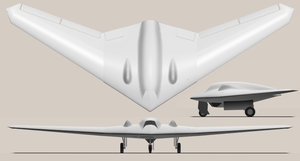Drone Mania in US Skies: Regulating the Future

It seems like dystopian mayhem: the US airspace, riddled with opportunistic drones, surveillance vehicles, hell fire missiles and other such lethal projectiles manned by ruthless, unhinged operators. There is also something far less intrusive or lethal: the delivery of purchased items, amateur filming, and the taking of aerial photos.
But the battle between the deployment of the drone, or unmanned vehicle, in its blissfully anarchic state, and one of regulations, continues on the Hill, and various state legislatures which find this technological nirvana a touch too much to handle. Currently, the Federal Aviation Administration (FAA) grants permission for the use of drones in instances where companies agree to a 400 feet threshold in flight within a controlled area, the use of licensed pilots, inspection by the FAA and flying within line of the operator’s sight (US News and World Report, Dec 4).
The courts have also had to contend with the matter. It has been held, for instance, that the National Transportation Safety Board (NTSB) can regulate drones. The NTSB ruling concerned the case of Raphael Pirker, who was fined for flying a small drone “near the University of Virginia to film a commercial video in 2011” (NPR Blog, Nov 18). The complaint alleged that Pirker’s Ritewing Zephyr drone had flown from various altitudes – 10 feet to 1,500 feet above ground – and “directly towards an individual standing on a … sidewalk causing the individual to take immediate evasive manoeuvres so as to avoid being struck.”[1]
Pirker’s drone was equipped with a camera, and is typical of the proliferation of vehicles that come at a very affordable $200. His argument was entirely expected, taking the line that the vehicle was effectively something akin to a “model aircraft”. To claim that such devices might fall within the jurisdiction of the FAA would be an all too imaginative reading.
The federal judge at first instance agreed with the defence, suggesting that the FAA’s position invited “the risible argument that a flight in the air of, e.g., a paper aircraft, or a toy balsa wood glider” would fall within FAA regulations. On appeal, the ruling was overturned, with FAA regulations on the operation of aircraft “in a careless or reckless manner so as to endanger the life or property of another” cited as an important provision. “The Administrator’s authority to ensure aviation safety largely rests upon the Administrator’s statutory responsibility to regulate the operation of ‘aircraft’.”
Various local concerns have also been registered about the actions of police forces relating to plans to use drones. Last year, in Oakland, the Alameda County Board of Supervisors held a meeting packed to the rafters, an occasion which saw members of the EFF and ACLU of Northern California consider plans by Sheriff Greg Ahern to get his hands on a drone (Gizmodo, Dec 5). Ahern did not have the numbers – only one attendee is recorded to have spoken in favour of the move.
No matter. Such temptations are simply too good to resist. Ahern is reported to have gone ahead, with some $97,000 obtained from the Office of Homeland Security and Emergency Services to acquire two unmanned aerial surveillance devices. According to Linda Lye of the ACLU of Northern California, “This is clearly an effort to bypass the public process.”[2] Ahern’s response has been to claim that appropriate policies on protection and deployment are in place, when they are visibly not.
Senator Dianne Feinstein (D-Calif.) has weighed into the broader debate on the private use of drones, suggesting that privacy may well be on the cards for debate in the new session of Congress. Anyone familiar with Feinstein’s record on privacy regarding surveillance will find this something of a lark – she obviously considers drones more troubling than cyber surveillance and warrantless tapping.
In this, she has a vested interest, keen to remind those who care to listen that she once found a drone peering at her through the window of her home (Politico, Jan 15). “Obviously the pilot of the drone had some surprise because the drone wheeled around and crashed, so I felt a little good about that.” Be that as it may, she is keen to get some legislation down on paper regulating the private use of drone craft in US airspace.
In Wednesday’s letter to FAA Administrator Michael Heurta, Feinstein explained her concerns about the 190 “near miss” incidents involving drones and aircraft this year alone. [3] “These reports include more than two dozen reports of near mid-air collisions with other aircraft and more than 100 reports of drones spotted in proximity to other aircraft.”
The problem with such unmanned aircraft is only as extensive as human error will allow. Unfortunately, the margins of such error, and at times, patent malice, is all too wide. The use of drones in the conflicts in Yemen and Pakistan waged by the United States have demonstrated the sheer futility of supposedly precise strikes, a hypocrisy that should not elude those on the Hill desperate to regulate the civilian use of such machines.
The human rights group Reprieve, for instance, has released figures showing how 41 targeted men led to a grand bloody total of 1,147 deaths. [4] Then again, civilian operations might just as well get away with a delivery of beer or stick to the strictures if privacy in the name of the American constitution. Ultimately, it is never machines, but those overseeing them, that cause the greatest concern.
Dr. Binoy Kampmark was a Commonwealth Scholar at Selwyn College, Cambridge. He lectures at RMIT University, Melbourne. Email: [email protected]
Notes

